Qualcomm is a multinational corporation specializing in semiconductors, software, and services for wireless technology. Headquartered in San Diego, California, it holds key patents for mobile communication standards like 5G, 4G, CDMA2000, TD-SCDMA, and WCDMA. The company plays a significant role in the development and advancement of wireless technologies globally.
July 1985: Qualcomm Created
In July 1985, Qualcomm was created by seven former Linkabit employees led by Irwin Jacobs. The company, named for "Quality Communications", started as a contract research and development center.
1985: Qualcomm Established
In 1985, Qualcomm was established by Irwin Jacobs and six other co-founders to research CDMA wireless cell phone technology. Funding for this was obtained by selling the Omnitracs system.
1985: Hired by Hughes Aircraft
In mid-1985, Qualcomm was hired by Hughes Aircraft to provide research and testing for a satellite network proposal to the Federal Communications Commission (FCC).
1986: Employee Growth
In 1986, Qualcomm grew from eight employees due to demand for Omnitracs.
1988: Qualcomm Merges with Omninet
In 1988, Qualcomm merged with Omninet and raised $3.5 million in funding to produce the Omnitracs satellite communications system for trucking companies.
1988: FCC Project Scrapped
In 1988, the project with the FCC was scrapped, when the FCC told all twelve vendors that submitted proposals to form a joint venture to create a single proposal.
1989: Revenue Growth
By 1989, Qualcomm had $32 million in revenue, 50 percent of which was from an Omnitracs contract with Schneider National. Omnitracs profits helped fund Qualcomm's research and development into code-division multiple access (CDMA) technologies for cell phone networks.
1989: Filing of Additional Patents
In 1989 Qualcomm filed three additional patents for power management, "soft handoff", and a variable rate encoder related to CDMA technology.
1989: CDMA Test Demonstrations
In 1989, Qualcomm conducted CDMA test demonstrations in San Diego.
1989: CDMA Submitted to CTIA
In 1989, Qualcomm further developed the CDMA techniques for commercial use and submitted them to the Cellular Telephone Industries Association (CTIA) as an alternative to the time-division multiple access (TDMA) standard for second-generation cell-phone networks.
1990: CDMA Test Demonstrations and Implementations
In 1990, Qualcomm conducted CDMA test demonstrations in New York City. In 1990, Nynex Mobile Communications and Ameritech Mobile Communications were the first carriers to implement CDMA networks instead of TDMA.
September 1991: Initial Public Offering
In September 1991, Qualcomm filed an initial public offering, raising $68 million to fund its investment in CDMA research.
November 1991: Large-Scale CDMA Field Tests
In November 1991, 14 carriers and manufacturers conducted large-scale CDMA field tests.
1991: Significant Employee Growth
By 1991, Qualcomm had grown to 620 employees due to demand for Omnitracs.
1991: Acquisition of Eudora email application
In 1991, Qualcomm acquired the email application called Eudora.
1991: Joint Development with ETRI
In 1991, Qualcomm and the Electronics and Telecommunications Research Institute (ETRI) agreed to jointly develop CDMA technologies for the Korean telecommunications infrastructure.
May 1993: First Large Manufacturing Project
In May 1993, Qualcomm's first large manufacturing project was in a deal to provide 36,000 CDMA phones to US West.
May 1993: CDMA Standard Adopted in Korea
In May 1993, a CDMA standard was adopted as the national wireless standard in Korea.
1993: CTIA Supports CDMA
In 1993, CTIA changed its position and supported CDMA, adopting Qualcomm's CDMA as the IS-95A standard, also known as cdmaOne. This prompted widespread criticism.
1994: Partnership with Northern Telecom and Sony
In 1994, Qualcomm partnered with Northern Telecom and formed a joint partnership with Sony to leverage their manufacturing expertise.
July 21, 1995: Primeco to Implement CDMA-based Services
On July 21, 1995, Primeco announced it was going to implement CDMA-based services on networks in 15 states.
1995: Additional Funding Round
In 1995, Qualcomm raised an additional $486 million through the sale of 11.5 million more shares to fund the mass manufacturing of CDMA-based phones, base-stations, and equipment. The company had $383 million in annual revenue.
1996: Eudora installed on 63 percent of PCs
By 1996, Eudora was installed on 63 percent of PCs.
1996: Revenue Growth
By 1996, Qualcomm had $814 million in annual revenue.
1996: Start of CDMA patent dispute with Ericsson
In 1996, a CDMA patent dispute between Qualcomm and Ericsson began, which was settled out-of-court in 1999.
1996: Commercial CDMA Networks Launched in Korea
In 1996, commercial CDMA networks were launched in Korea.
March 1997: Motorola lawsuit for allegedly copying the design of its Startac phone
In March 1997, after Qualcomm introduced its Q phone, Motorola initiated a lawsuit against Qualcomm for allegedly copying the design of its Startac phone.
1997: Market Share
By 1997 CDMA had 57 percent of the US market, whereas 14 percent of the market was on TDMA.
1998: Consolidation of telecom interests into Leap Wireless
In 1998, Qualcomm consolidated its interests in telecommunications carriers, such as Cricket Communications and Pegaso, into a holding company, Leap Wireless.
1998: Restructuring and Layoffs
In 1998, Qualcomm was restructured, leading to a 700-employee layoff. Its base station and cell-phone manufacturing businesses were spun-off to focus on patents and chipsets.
1998: ETSI voted in support of the WCDMA standard
In 1998, the European Telecommunications Standards Institute (ETSI) voted in support of the WCDMA standard, which relied less on Qualcomm's CDMA patents, leading Qualcomm to refuse to license its intellectual property for the standard.
December 1999: Sale of manufacturing interests to Kyocera Corporation
In December 1999, Qualcomm sold its manufacturing interests to Kyocera Corporation, a Japanese CDMA manufacturer.
1999: Out-of-court agreement with Ericsson over CDMA patent dispute
In 1999, Qualcomm and Ericsson reached an out-of-court agreement, one month before an ITU deadline, resolving a CDMA patent dispute, where both companies agreed to cross-license their technology and collaborate on 3G standards.
2000: Company Growth
By 2000, Qualcomm had grown to 6,300 employees, $3.2 billion in revenues, and $670 million in profit. 39 percent of its sales were from CDMA technology, followed by licensing (22%), wireless (22%), and other products (17%). Around this time, Qualcomm established offices in Europe, Asia Pacific, and in the Americas.
2000: Partnership with China Unicom
In 2000, Qualcomm entered the Chinese market through a partnership with China Unicom.
2000: Formation of Wingcast with Ford
In 2000, Qualcomm formed a joint venture with Ford called Wingcast, which created telematics equipment for cars.
2000: Settlement of Motorola lawsuit
In 2000, Qualcomm settled out of court the lawsuit initiated by Motorola in March 1997, which alleged that Qualcomm's Q phone copied the design of Motorola's Startac phone.
November 2001: KTFreeTel adopted the Brew system
In November 2001, South Korean carrier KTFreeTel was the first to adopt the Brew system.
2001: International Revenue
By 2001, 65 percent of Qualcomm's revenues originated from outside the United States with 35 percent coming from South Korea.
March 2002: Verizon adopted the Brew system for its Get it Now program
In March 2002, Verizon adopted the Brew system for its "Get it Now" program.
2003: Eudora share of the market
By 2003 Qualcomm's Eudora was the most popular alternative to Microsoft Outlook, but still had only a five percent share of the market.
2003: 73 million Brew users
By 2003, there were 73 million Brew users.
2003: First CDMA-Based Network in China
In 2003, China Unicom launched the first CDMA-based network in China.
2004: 240 million CDMA 3G subscribers
By 2004, there were 240 million CDMA 3G subscribers.
2004: Acquisition of Iridigm
In 2004, Qualcomm acquired Iridigm for $170 million to develop Mirasol displays.
2004: Creation of MediaFLO subsidiary
In 2004, Qualcomm created a MediaFLO subsidiary to bring its FLO (forward link only) specification to market.
2004: Founding of VLSI Technology Organization division
In 2004, Qualcomm founded a VLSI Technology Organization division to focus on semiconductor manufacturing.
July 2005: Creation of the FLO Forum standards group
In July 2005, Qualcomm created the FLO Forum standards group with 15 industry participants.
October 2005: Complaint Filed Against Qualcomm with European Commission
In October 2005, six large telecommunications companies led by Nokia filed a complaint against Qualcomm with the European Commission's antitrust division, alleging Qualcomm was abusing its market position to charge unreasonable rates for its patents. Qualcomm alleged the six companies were colluding together under the code name Project Stockholm in a legal strategy to negotiate lower rates.
November 2005: Development of Scorpion CPU announced
In November 2005, Qualcomm announced that it was developing the Scorpion central processing unit (CPU) for mobile devices.
December 2005: Verizon partnered with MediaFlo for V Cast TV
In December 2005, Verizon was the first carrier to partner with MediaFlo for its Verizon Wireless' V Cast TV.
2005: $74 million settlement in employee stock options legal dispute
By 2005, Qualcomm reached $74 million in settlements regarding a protracted legal dispute over employee stock options, following the sale of its infrastructure division in 1999.
2005: 143 CDMA carriers in 67 countries
By 2005, there were 143 CDMA carriers in 67 countries.
2005: Broadcom sued Qualcomm
In 2005, Broadcom and Qualcomm were unable to reach an agreement on cross-licensing their intellectual property. Consequently, Broadcom sued Qualcomm, alleging it was breaching ten Broadcom patents and asked the International Trade Commission to prohibit importing the affected technology.
2005: New CEO Appointed
In 2005, Paul E. Jacobs was appointed as Qualcomm's new CEO, shifting the company's focus to projects related to the Internet of Things. In the same year they acquired Flarion Technologies, a developer of wireless broadband Orthogonal Frequency Division Multiplex Access (OFDMA) technology.
2005: Expansion into Russian and Latin American Markets
In 2005, Qualcomm entered the Russian and Latin American markets.
2005: Halt of UMB development and decision to support LTE
In 2005, Qualcomm halted development of Ultra Mobile Broadband (UMB) and decided to support the LTE standard.
September 2006: Court Rules in Favor of Qualcomm
In September 2006, a New Jersey court judge ruled that Qualcomm's patent monopoly was an inherent aspect of creating industry standards and that Qualcomm's pricing practices were lawful.
December 2006: Antitrust Complaints Filed Against Qualcomm
In December 2006, several companies filed antitrust complaints against Qualcomm with the Korean Fair Trade Commission, who initiated an investigation into Qualcomm's practices.
2006: More than 20 lawsuits had been filed between Broadcom and Qualcomm
By late 2006, more than 20 lawsuits had been filed between Broadcom and Qualcomm due to failure to reach an agreement on cross-licensing their intellectual property and both sides claimed to be winning.
2006: Founding of DFX group
In 2006, Qualcomm founded a DFX group, which did more of the manufacturing design in-house.
2006: Software development for Eudora retired
In 2006, Qualcomm retired software development for Eudora.
April 2007: Licensing Agreement Ends Between Qualcomm and Nokia
In April 2007, the dispute between Qualcomm and Nokia escalated when their licensing agreement ended.
May 2007: Jury Orders Qualcomm to Pay Broadcom
In May 2007, a jury ordered Qualcomm to pay Broadcom $19.6 million for infringing on three Broadcom patents.
June 2007: ITC Rules Qualcomm Infringed Broadcom Patent
In June 2007, the ITC ruled that Qualcomm had infringed on at least one Broadcom patent and banned corresponding imports.
November 2007: First shipments of Snapdragon system-on-chip
In November 2007, the first shipments of the Snapdragon system-on-chip product, which includes a CPU, GPS, graphics processing unit, camera support and other software and semiconductors, were made.
2007: Korean Manufacturer Revenues
By 2007, $500 million of Qualcomm's annual revenues were coming from Korean manufacturers.
2007: Technology in Cell Phone Networks in Over 105 Countries
By 2007, Qualcomm's technology was in cell phone networks in more than 105 countries.
2007: Commercialization of Mirasol displays began
In 2007, Qualcomm began commercializing Mirasol displays, based on technology acquired from Iridigm in 2004.
2007: MediaFlo service launched on Super Bowl Sunday
In 2007, the MediaFlo service was launched on Super Bowl Sunday.
February 2008: Parties Agree to Halt Litigation
In February 2008, Nokia and Qualcomm agreed to halt any new litigation until an initial ruling is made on the first lawsuit in Delaware.
July 2008: Nokia and Qualcomm Reach Settlement
In July 2008, Nokia and Qualcomm reached an out-of-court settlement that ended the dispute and created a 15-year cross-licensing agreement.
2008: Expanded Mirasol into eight products
In 2008, Qualcomm expanded Mirasol displays into eight products.
2008: Release of Gobi family of modems
In 2008, Qualcomm released the Gobi family of modems for portable devices.
April 2009: Qualcomm and Broadcom Reach Settlement
In April 2009, Qualcomm and Broadcom reached a settlement resulting in a cross-licensing agreement, a dismissal of all litigation, and Qualcomm paying $891 million over four years.
2010: Won a government auction in India
In 2010, Qualcomm won a government auction in India for $1 billion in spectrum and licenses from which to offer broadband services and formed four joint ventures with Indian holding companies for this purpose.
June 2011: Introduction of AllJoyn
In June 2011, Qualcomm introduced AllJoyn, a wireless standard for communicating between devices like cell phones, televisions, air-conditioners, and refrigerators.
July 2011: ParkerVision Files Lawsuit Against Qualcomm
In July 2011, ParkerVision filed a lawsuit against Qualcomm alleging that it infringed on seven ParkerVision patents related to converting electromagnetic radio signals to lower frequencies.
November 2011: Qualcomm acquired HaloIPT
In November 2011, Qualcomm acquired the wireless electric car charging company, HaloIPT.
December 2011: Formation of Qualcomm Life and release of 2net
In December 2011, Qualcomm formed a healthcare subsidiary called Qualcomm Life and released a cloud-based service for managing clinical data called 2net and the Qualcomm Life Fund.
2011: MediaFlo service discontinued
In 2011, the MediaFlo service was discontinued, and its spectrum was sold to AT&T for $1.93 billion.
May 2012: Bharti acquired a 49 percent stake in the holding companies
In May 2012, Bharti acquired a 49 percent stake in the holding companies that Qualcomm formed in 2010 in India to offer broadband services.
2012: Qualcomm held 81 seminal patents used in 4G LTE standards
By 2012, Qualcomm held 81 seminal patents used in 4G LTE standards, representing 12.46 percent of such patents.
January 2013: Qualcomm Adopts Policy of Disclosing Political Contributions
In January 2013, a lawsuit resulted in Qualcomm voluntarily adopting a policy of disclosing its political contributions.
August 2013: Chinese Regulator Raids Qualcomm's Offices
In August 2013, the Chinese regulator raided Qualcomm's Chinese offices as part of an anti-trust investigation.
November 2013: China Initiates Anti-Trust Investigation
In November 2013, the China National Development and Reform Commission initiated an anti-trust investigation into Qualcomm's licensing division.
December 2013: CEO Succession Announced
In December 2013, Qualcomm announced Steven Mollenkopf would succeed Paul Jacobs as CEO. Mollenkopf planned to expand Qualcomm's focus to wireless technology for cars, wearable devices, and other new markets.
December 2013: Donation of Alljoyn technology to the Linux Foundation
In December 2013, the Alljoyn technology was donated to the Linux Foundation.
2013: Close down Mirasol after revive attempt
In 2013, Mirasol was eventually closed down after an attempt to revive it in Toq watches.
2013: Reboot of effort with LTE Broadcast
In 2013, Qualcomm rebooted the MediaFlo effort with LTE Broadcast, which uses pre-existing cell towers to broadcast select content locally on a dedicated spectrum, such as during major sporting events.
2014: Leap Wireless sold to AT&T
In 2014, Leap Wireless, which was spun-off by Qualcomm in 1998, was sold to AT&T.
2015: Settlement Reached in China Anti-Trust Investigation
In 2015, Qualcomm's anti-trust dispute in China was settled for $975 million.
October 2016: Intent to Acquire NXP Semiconductors
In October 2016, Qualcomm announced its intent to acquire NXP Semiconductors for $47 billion.
October 2016: Announcement of first 5G modem chip
In October 2016, Qualcomm's first 5G modem chip was announced.
2016: Development of "Server Development Platform"
In 2016, Qualcomm developed its first beta processor chip for servers and PCs called "Server Development Platform" and sent samples for testing.
2016: Korea Fair Trade Commission Alleges Qualcomm Abused Market Position
In late 2016, the Korea Fair Trade Commission alleged Qualcomm abused a "dominant market position" to charge cell phone manufacturers excessive royalties for patents and limit sales to companies selling competing semiconductor products.
January 2017: Release of Centriq 2400
In January 2017, a second generation data center and PC server chip called Centriq 2400 was released.
January 2017: FTC and Apple Initiate Investigations and Lawsuits Against Qualcomm
In January 2017, the Federal Trade Commission (FTC) initiated an investigation into allegations that Qualcomm charged excessive royalties for patents. That same year, Apple initiated a $1 billion lawsuit against Qualcomm in the U.S. alleging Qualcomm overcharged for semiconductors and failed to pay $1 billion in rebates. Apple also filed lawsuits in China and the United Kingdom.
April 2017: Qualcomm Pays Settlement to BlackBerry
In April 2017, Qualcomm paid an $814.9 million settlement to BlackBerry as a refund for prepaid licensing fees.
April 2017: NXP Acquisition Approved by U.S. Regulators
In April 2017, the deal to acquire NXP Semiconductors was approved by U.S. antitrust regulators with some standard-essential patents excluded.
August 2017: ITC Investigates Apple's Use of Qualcomm Patents
In August 2017, the International Trade Commission responded to Qualcomm's complaints by starting an investigation of Apple's use of Qualcomm patents without royalties.
October 2017: Demonstration of a 5G prototype
In October 2017, Qualcomm demonstrated a prototype for 5G technology.
October 2017: Taiwan's Fair Trade Commission Fines Qualcomm
In October 2017, Taiwan's Fair Trade Commission fined Qualcomm another $773 million.
2017: Qualcomm owned more than 130,000 current or pending patents
In 2017, Qualcomm owned more than 130,000 current or pending patents.
2017: FTC Files Suit Against Qualcomm
In 2017, stemming from the investigation that led to the Apple lawsuit actions, the FTC filed suit against Qualcomm alleging it engaged in antitrust behavior due to its monopoly on wireless broadband technology.
January 2018: European Commission Fines Qualcomm
In January 2018, the European Competition Commission fined Qualcomm $1.2 billion for an arrangement to use Qualcomm chips exclusively in Apple's mobile products.
July 2018: NXP Acquisition Abandoned
In July 2018, Qualcomm abandoned the deal to acquire NXP after extending a tender offer at least 29 times pending Chinese approval, amidst the 2018 China–United States trade war.
July 2018: Announcement of first 5G antennas
In July 2018, Qualcomm's first 5G antennas were announced.
December 2018: Chinese and German Courts Rule on Apple's Patent Infringement
In December 2018, Chinese and German courts held that Apple infringed on Qualcomm patents and banned sales of certain iPhones.
2018: Qualcomm Pays Settlement to Taiwan
In late 2018, Qualcomm paid a settlement to Taiwan for $93 million in fines and a promise to spend $700 million in the local Taiwan economy.
January 2019: Trial Starts in FTC Lawsuit Against Qualcomm
In January 2019, the trial started in the FTC lawsuit against Qualcomm, heard by Judge Lucy Koh. The lawsuit alleged that Qualcomm engaged in antitrust behavior due to its monopoly on wireless broadband technology.
February 2019: Qualcomm sold HaloIPT to WiTricity
In February 2019, Qualcomm sold the wireless electric car charging company, HaloIPT, to WiTricity.
April 2019: Apple and Qualcomm Reach Agreement
In April 2019, Apple and Qualcomm reached an agreement to cease all litigation and sign a six-year licensing agreement. The settlement included a one-time payment from Apple of about $4.5 to 4.7 billion.
May 2019: Judge Rules Against Qualcomm in FTC Lawsuit
In May 2019, Judge Koh ruled against Qualcomm, asserting that Qualcomm's practices violated antitrust. Qualcomm was forced to stop its "no license, no chips" bundling with phone manufacturers, and was required to license its patents to other chip manufacturers.
2019: Phones being sold with Qualcomm's 5G technology
By late 2019, several phones were being sold with Qualcomm's 5G technology incorporated.
2019: Sale of Qualcomm life
In 2019, Qualcomm life was sold to a private equity firm, Francisco Partners.
August 2020: Ninth Circuit Reverses Decision in FTC v. Qualcomm
In August 2020, the Ninth Circuit reversed the decision in the FTC v. Qualcomm case, determining that Judge Koh's decision strayed beyond the scope of antitrust law and that the FTC failed to meet its burden of proof. The court concluded that Qualcomm's business practices were better characterized as "hypercompetitive" rather than "anticompetitive".
2020: Hired Nan Zhou to head Qualcomm's push into AI
In 2020, Qualcomm hired Baidu veteran, Nan Zhou, to head Qualcomm's push into AI.
January 6, 2021: Cristiano Amon Appointed CEO
On January 6, 2021, Qualcomm appointed its president and chip division head Cristiano Amon as its new chief executive.
January 13, 2021: Qualcomm to Acquire Nuvia
On January 13, 2021, Qualcomm announced it would acquire Nuvia, a server CPU startup, for approximately $1.4 billion.
March 2021: Nuvia Acquisition Completed
In March 2021, Qualcomm completed its acquisition of Nuvia.
March 2022: Acquisition of Arriver
In March 2022, Qualcomm acquired the advanced driver-assistance systems and autonomous driving software brand Arriver from SSW Partners.
June 2022: Acquisition of Cellwize
In June 2022, Qualcomm acquired Israeli startup Cellwize through its investment arm Qualcomm Ventures.
June 2022: Qualcomm Wins Appeal of EU Antitrust Fine
In June 2022, Qualcomm announced the company had won its appeal of the European Union antitrust fine from January 2018. The appeal had highlighted that Apple as a company had no technical alternative other than to use Qualcomm's LTE chipsets.
August 2022: Return to Server CPU Market and Lawsuit
In August 2022, Bloomberg News reported Qualcomm was planning to return to the server CPU market based on Nuvia's product. Later that month, Arm Ltd. sued Qualcomm and Nuvia for breaching license agreements and trademark violations, citing that the chip designs using Arm licenses developed by Nuvia could not be transferred to Qualcomm without permission. Qualcomm indicated that its licenses with Arm cover custom-designed processors.
2022: Laptop CPUs Shipping
Qualcomm announced that its first products from the Nuvia acquisition would be laptop CPUs, shipping in the second half of 2022.
January 2023: Partnership with Salesforce
In January 2023, Qualcomm announced a new partnership with Salesforce to develop a connected vehicle platform for automakers using the Snapdragon digital chassis.
May 2023: Intent to Purchase Autotalks
In May 2023, Qualcomm announced their intent to purchase Israeli fabless chipmaking company Autotalks for a reported $350–400 million. The purchase is subject to review by the Competition and Markets Authority.
September 2023: Sponsorship with Manchester United
In September 2023, Qualcomm announced that it had signed a contract rumored to be worth $75 million per year for its Snapdragon brand to be the primary shirt sponsor for English football club Manchester United starting with the 2024–25 season, replacing German company TeamViewer.
October 2023: Introduction of Snapdragon X Series
In October 2023, Qualcomm introduced the Snapdragon X series, a computing platform for Windows PCs which includes a custom ARM-based Oryon CPU (from Nuvia acquisition), a GPU, and a dedicated neural processing unit.
2023: Qualcomm Loses Case in Supreme Court of the Republic of Korea
In 2023 Qualcomm lost the case in the Supreme Court of the Republic of Korea, causing the fine from 2016 to be enacted in force.
2023: Qualcomm ranked 3rd in patent applications published under the PCT System
In 2023, the World Intellectual Property Organization (WIPO)’s Annual PCT Review ranked Qualcomm's number of patent applications published under the PCT System as 3rd in the world, with 3,410 patent applications being published during 2023.
March 2024: Termination of Autotalks Acquisition
In March 2024, it was announced by the Federal Trade Commission that Qualcomm's proposed acquisition of Autotalks has been terminated.
October 2024: Arm Cancels Qualcomm's Chip Design License
In October 2024, Arm Ltd. said it would cancel Qualcomm's chip design license in an escalation of the dispute over the acquisition of Nuvia.
October 2024: Expiration of Qualcomm-Microsoft Exclusive Protocol Announced
In October 2024, Qualcomm announced that the Qualcomm-Microsoft exclusive protocol will expire in December 25 2024, allowing Windows on ARM devices to adapt ARM CPUs other than Qualcomm Snapdragon.
December 2024: Partial Ruling in Qualcomm's Favor
In December 2024, a U.S. federal jury ruled partially in Qualcomm's favor, finding that its designs were properly licensed under an agreement with Arm. However, the jury was deadlocked on one of three issues raised, resulting in a mistrial on that specific point.
2024: Snapdragon Sponsorship to Begin
In September 2023, Qualcomm announced that the Snapdragon brand would be the primary shirt sponsor for English football club Manchester United, starting with the 2024-25 season.
February 2025: Arm Withdraws Efforts to Terminate Chip-Licensing Agreement
In February 2025, Arm withdrew its efforts to terminate Qualcomm's chip-licensing agreement.
Mentioned in this timeline
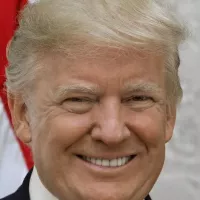
Donald John Trump is an American politician media personality and...
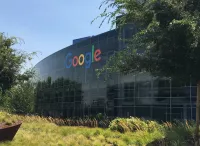
Google LLC is a multinational technology company specializing in online...
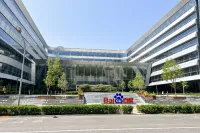
Baidu Inc is a prominent Chinese multinational technology company focused...

Samsung Group is a South Korean multinational manufacturing conglomerate and...

Sony is a Japanese multinational conglomerate based in Tokyo Its...
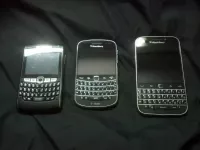
BlackBerry a once-popular brand of smartphones known for their physical...
Trending
Mike Elko is an American college football coach currently serving as the head coach at Texas A M University a...

7 months ago Yankees' Luke Weaver Likely to Injured List Due to Hamstring Issue
7 months ago Cade Horton promoted to Chicago Cubs; Mets prepare for Horton debut.

2 months ago Learner Tien faces Nuno Borges in ATP Paris Masters 2025 first round.

Fani Taifa Willis is an American attorney currently serving as the district attorney of Fulton County Georgia since Notably she...

Matthew Judon is an American football linebacker for the Atlanta Falcons He played college football at Grand Valley State setting...
Popular

Candace Owens is an American conservative political commentator and author...

Ilhan Omar is an American politician currently serving as the...

XXXTentacion born Jahseh Dwayne Ricardo Onfroy was a controversial yet...

Charles James Charlie Kirk was a prominent American right-wing political...

Frederick Christ Trump Sr - was an American real estate...
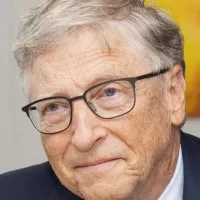
Bill Gates an American businessman and philanthropist revolutionized personal computing...
